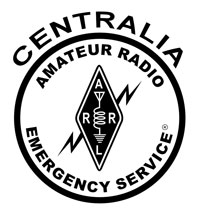 It was 56 degrees, 11 mph winds and raining hard but two weeks after our ARES team designed a 6.0 earthquake it was time to put this disaster into play. Since we do these types of exercises fairly often, we tend to use one of our two hour training nights rather than a full day scenario. Not much time to get everything done, but it just makes us work faster. 10 minutes into the evening everyone had their scenario, action plan, safety briefing, tactical call signs, radio frequencies and assignments so out the door we went.
It was 56 degrees, 11 mph winds and raining hard but two weeks after our ARES team designed a 6.0 earthquake it was time to put this disaster into play. Since we do these types of exercises fairly often, we tend to use one of our two hour training nights rather than a full day scenario. Not much time to get everything done, but it just makes us work faster. 10 minutes into the evening everyone had their scenario, action plan, safety briefing, tactical call signs, radio frequencies and assignments so out the door we went.
In this exercise, our Emergency Operations Center and much of the downtown area sustained damage, so command and control transferred to the Riverside Fire Authorities Emergency Coordination Center across town. Power was out in some, but not all of the area. A 48 car train carrying crude oil managed to stop when the earthquake hit, but two cars came off the tracks and tipped over. The train cut the community in half. Team members had to look up the emergency response guide placard “1267” and take precautions accordingly. A fairly large portion of the area near the train derailment needed to evacuate so two of the team mapped out multiple evacuation routes. A mutual aid request from the county sent us to the small town of Galvin and windshield surveys became widespread. Creating a little “havoc” of our own, several team members made up insert scenarios ranging from traffic accidents, to fires to possible overpass failures. On top of everything else, we had our communications vans spread out and were working on some HF radio tests using 6 and 10 meter ground wave. It was a fun evening’s work keeping net control very busy.
There is no such thing as a “perfect” disaster exercise – at least for our team – but this one was close to perfect. We need to slow down and control our communications – something we should be good at already. It is difficult to always remember to say “exercise, exercise, exercise” but thankfully, net control did a great job of doing that. We didn’t have quite enough people to get everything done that we had planned but what we did get done was completed safely and correctly. We only train in the fire department’s ECC a couple of times per year but it is a beautiful facility with lots of maps and radio equipment. It was a good learning experience for our net control and evacuation planners.
So what’s next? We will debrief this exercise at our next meeting and fix a few bugs we found in one of the communications vans. We hope to turn right around and design a flood disaster scenario since flood season is here in our area. Maybe it is time to see how well one or more of the Assistant Emergency Coordinators can design a disaster scenario. Hmmm……..

